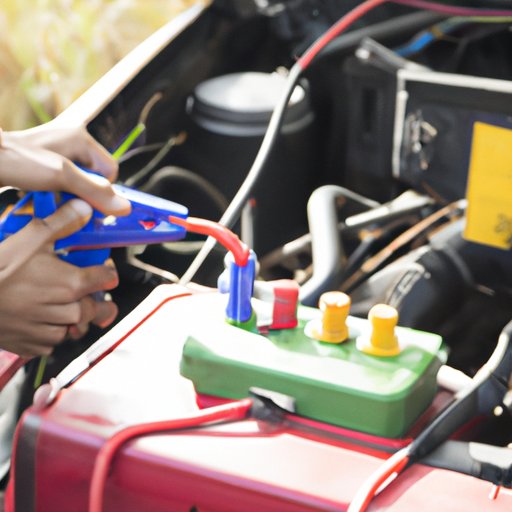Introduction
A starter is an important part of any vehicle’s engine. Without it, the engine wouldn’t be able to start. Therefore, it is essential to know how to tell if a starter is bad in order to prevent any further damage to the vehicle. This article will provide an overview of the signs of a bad starter and explain how to identify them.
Listen for Unusual Noises
One of the most common signs of a bad starter is an unusual noise coming from the engine when you turn the key. This noise could be anything from a grinding sound to a clicking or buzzing noise. In most cases, this noise indicates that the starter motor is not engaging properly or is failing to turn the engine over.
In order to accurately diagnose the source of the noise, it is important to listen carefully and take note of the exact sound you are hearing. It is also important to pay attention to the frequency and duration of the noise. If it is a continuous noise, it may indicate a more serious problem with the starter.
Check for Corrosion
Another sign of a bad starter is corrosion on the starter motor itself. Corrosion can occur due to moisture and dirt getting into the starter motor and can cause it to malfunction. To check for corrosion, remove the starter motor and inspect it carefully. Look for any signs of rust or discoloration, as well as any cracks or signs of wear.
If there is significant corrosion present, it is likely that the starter motor needs to be replaced. If the corrosion is only minor, it may be possible to clean and repair the starter motor before replacing it.

Test the Battery and Alternator
The battery and alternator play an important role in starting the engine and should be checked if the starter motor appears to be bad. To test the battery, use a multimeter to measure the voltage output. If the voltage is below 12 volts, the battery may need to be replaced. To test the alternator, use a multimeter to measure the current output. If the current readings are low, it could indicate a faulty alternator.
It is important to remember that even if the battery and alternator are working properly, they may still be contributing to the problem if they are not providing enough power to the starter motor. In this case, it may be necessary to replace the battery and/or alternator in order to resolve the issue.
Inspect the Starter Solenoid
The starter solenoid is responsible for connecting the starter motor to the battery and allowing it to turn the engine over. If the solenoid is damaged or worn out, it can cause the starter motor to fail. To inspect the starter solenoid, remove the starter motor and inspect the solenoid for any signs of wear or damage. If the solenoid appears to be damaged, it should be replaced.
It is important to note that the starter solenoid may not always be the cause of the problem. If the solenoid appears to be in good condition, other components such as the starter motor may need to be tested or replaced.
Have a Professional Diagnose the Problem
If you suspect that the starter is bad but cannot pinpoint the source of the problem, it is best to have a professional diagnose the issue. A qualified mechanic will be able to inspect the starter and other components of the engine to determine the cause of the issue and recommend an appropriate solution.
When looking for a qualified professional, it is important to research their experience and qualifications to ensure that they are capable of diagnosing and repairing the issue correctly. You should also ask for references from previous clients to get an idea of their level of service.
Conclusion
Knowing how to tell if a starter is bad can help you avoid further damage to the vehicle and costly repairs. By listening for unusual noises, checking for corrosion, testing the battery and alternator, inspecting the starter solenoid, and having a professional diagnose the problem, you can quickly identify and fix any issues with the starter.
If you are having trouble starting your car, don’t hesitate to take action. Contact a qualified professional today to diagnose the problem and get your vehicle running again.
(Note: Is this article not meeting your expectations? Do you have knowledge or insights to share? Unlock new opportunities and expand your reach by joining our authors team. Click Registration to join us and share your expertise with our readers.)
